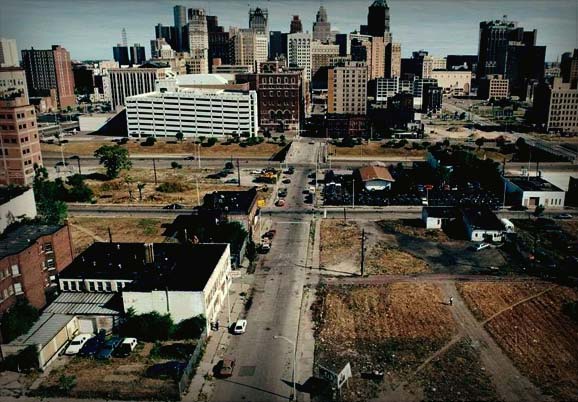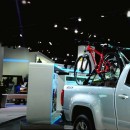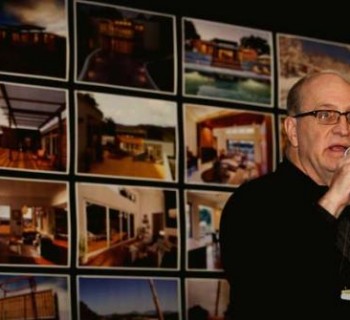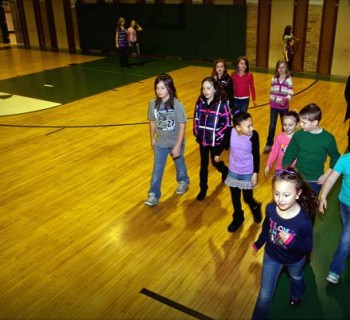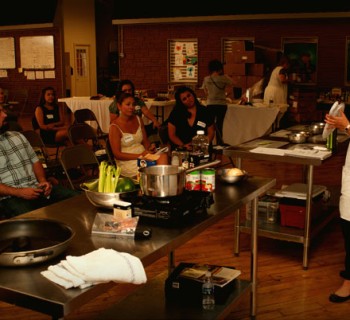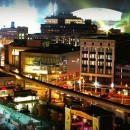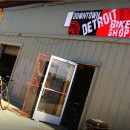DETROIT—With the imminent approval of a $450 million,18,000-seat hockey stadium slated for the northern edge of downtown, a group of historians, architects, designers and neighborhood stakeholders have forged Corridors Alliance to help channel community input.
“Set aside whether you think the arena is a good thing or not. Our group is more focused on making the arena the best version of itself it can be,” said Francis Grunow, ad hoc leader of the group which began meeting three years ago and launched its Facebook page last month.
Key questions are emerging about a new Detroit Red Wings stadium to be built on the northern edge of downtown between Ford Field and Comerica Park on the south and the Midtown apartment/loft scene on the south.
The Corridors Alliance, a nonprofit group ran a study on its Facebook page, finding among 30 respondents that 19.1 percent were concerned with the displacement of residents and businesses and 13.2 percent with traffic and surface parking. Only 2 percent said they were concerned with lack of green space when whole blocks are filled with buildings and parking structures.
On the other hand 18.7 respondents were excited about jobs and economic development and 13.3 percent were bullish about new residents and businesses. Another 10.7 percent saw improved walkability and transportation when the stadium arrives.
Yet Grunow knows the process of getting to opening day will take keen work on behalf of civic-conscious residents and friends. The Corridors Alliance, now forged with Doing Development Differently in Detroit, wants to address Olympia Development with concerns about how to sustain green space, where to park with the least traffic disruption, how to incorporate a streetscape into the building design and acertain a commitment to improve job opportunities for the surrounding neighborhood.
“The tendency is to do a lot of this work behind the scenes, behind closed doors. Ultimately, a stadium that is something people value is one that people endorse, where they get involved,” Grunow said.
The sheer scope of the project is one that involves city tax revenues, private business, state government authorized bond sales and redevelopment of 45 blocks stretching from Grand Circus Park to Charlotte Street.
“I like it. The city is taking a swath of empty blocks with no tax revenue and making something exciting,” said Joel Landy, owner of the Addison and other properties on Charlotte, who spoke at a recent hearing on the project before the Detroit City Council, which tabled the measure. About 60 percent of the speakers at the council meeting were against it, 40 percent for it.
The new $450 million arena includes a $200 million entertainment district. Channel 7 Action News said the stadium will stand seven stories tall with five floors underground. Backers say the arena itself is expected to create 5,500 jobs and generate $1.8 billion in economic activity for the area.
Plans may include an additional lane to be added along I-75 to route traffic. A land bridge may be built over I-75 to allow people to walk to the stadium. Preliminary plans were approved in June. The project may not be completed until 2017, according to the WXYZ-TV. Olympia Development representatives did not respond to Mode Shift questions.
“With all the challenges and opportunities it helps to have some oversight,” said Grunow, who works for the New Solutions Group in Detroit. A lawyer by training, he served as Senior Policy Analyst for Community Legal Resources and the Detroit Vacant Property Campaign. In this capacity, Grunow familiarized himself with land bank law and worked closely with the City’s Building Department and Center for Community Progress staff to help create a novel community code enforcement reporting and feedback mechanism to help communities address vacant properties issues. Before law school he led Preservation Detroit, the leading historic society of the city.
While Corridors Alliance doesn’t endeavor to design an arena, members want a development that is of high quality, sustainable, equitable and mixed use, according to Kristen Dean, a designer and steering committee member of the Corridors Alliance.
“We started out as a group of primarily designers and planners, and we struggled for a long time trying to figure out how we might make an impact on the stadium,” said Dean. “The group’s goals really began to take shape as we learned more about community engagement tactics and tools like community benefits agreements. We started to think of ourselves as more of a conduit between the community and the developer.”
Indeed, more people are getting on board. Two graduate students at University of Detroit-Mercy’s Master of Community Development program will devote their Capstone Project to helping plan and execute community engagement around the arena project. The Great Lakes Environmental Law Center, housed at Wayne State University’s Law School, assigned an environmental law school student to address questions of freeway funding and restrictions.
The Corridors Alliance has a wellspring of resources to tap for expertise in community feedback. Chuck Forbes, owner of the Gem Theater and Century Club successfully lobbied to have Olympia Development move the 2,700-ton, 100-year-old pair of buildings a total of five city blocks on wheels, the furthest known relocation of a sizeable building.
If collaboration is sought, they can look to the Urban Priorities Committee of the American Institute of Architects, which hosted an international competition in 2012 for reviving Hart Plaza on the Detroit riverfront, calling it Detroit by Design.
Numerous meetings will take place with Brush Park, Midtown, and other groups weighing in, Grunow predicts. The steering committee wants to assure the developers don’t plunk a huge box down and let it go. They hope for lighted pathways and street level shops and pocket parks.
With a focus on community benefits the group members will work with community stakeholders to communicate their ideal vision for the arena. A peek at the new stadium is available on the website, www.newolympia.blogspot.com.
“We need to know how downtown and Midtown will connect, Grunow said. “How will the new and existing bike routes pass through the stadium area during construction and once built?” The questions have only just begun.


